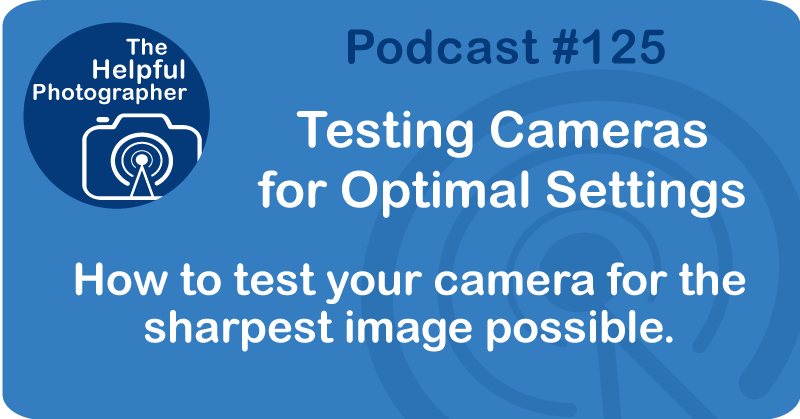Testing Cameras for Optimal Settings #125
Testing Cameras for Optimal Settings #125

Many amateur photographers set their camera settings based on what they read on the internet. So what do you do when you're not a pro? Today, I'm gonna talk about how to run tests to find the best settings for your camera and your situation. The benefit of art school was that we ran lots of tests, lots and lots of tests. We tested film, we tested focus, you name it, we tested it. It gave us a much better understanding of the limits of our equipment and taught us how to manipulate our cameras to get the results we wanted. Let's dive in.
Shutter speed test. Many people believe that they have better hands than they actually do. Well, duh! I think most of us think that we're better at just about everything than we actually are. When it comes to being able to handhold at slow shutter speeds, this is most certainly true. The only people who fall into the other category are those who have known hand tremors. Those folks never assume they are as good as they probably are. So how do you figure out your handhold capability? It's easy. Take your camera and mount it to the lens you use most. Let's say it's the 24 to 70 mm lens. Set your camera to a static ISO of 100 or 200. Print on a piece of paper large black letters that fill up half the page, also some thick straight lines, and tape it to a wall. Fill up your frame with the paper as much as you can and shoot it in shutter priority. Start with a shutter speed of about 1/250 of a second, and keep moving your shutter speed step by step down to 1 second, shooting an image at every shutter speed change. Then review the images. When you see the letters start to look like they have motion blur, that's it! That's how slow you can shoot and still retain sharpness. That is, if your subject is static. Note that your aperture will change to compensate for the changing shutter speed, so you may see a slight change in sharpness. But what we're looking for is motion. Motion is usually evidenced by a doubling effect. After you do this, do it again at different focal lengths. Make sure you do this with your longest lens as well as your shortest lens and see the difference. Easy, right?
Now, let's test your lens for the sweet spot. The sweet spot is the aperture that renders the sharpest image your lens is capable of producing. Again, set your camera to an ISO of 100 or 200. Except this time, you'll want to set your camera up on a tripod, and use aperture priority. Instead of moving your shutter speed, this time, move your aperture. Start at the widest opening and move it one aperture at a time until you get to the smallest opening. Do this again at different focal lengths and with different lenses and see if you get different results. What you're looking for are the edges of the black letters. There you'll find that the edges may become a little bit blurry or have a bit of a halo. Also, look at the edges of your frame, especially in the corners. There you may see that at certain apertures, especially the widest ones, it may be a little bit blurry or distorted. When the edges of your paper and the letters are sharpest, you have the sweet spot, and the best aperture for that lens. Also, try to make sure that your camera is set up parallel to the wall that you have your paper taped to. And make sure that you turn off your image stabilization. If your tripod is not particularly stable, use a remote shutter release or timer so that you don't shake your camera when you press the button.
To test for the best ISO range, put your camera on a tripod and again, set it to aperture priority. Set your aperture to the sweet spot that you just discovered in the aperture test. You will wanna do this in a place that has relatively low light. Using the same printout. Shoot it at different ISOs, starting with your lowest ISO, and then keep increasing it until you get to your maximum. Then review your images and see what's acceptable to you. With this, you will know exactly what your optimal settings are for your camera, and there's no guesswork. I hope that was helpful.












